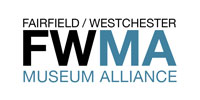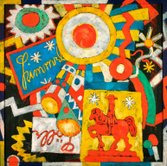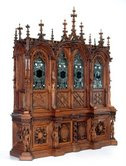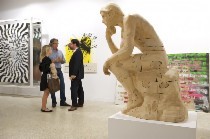I come to praise the Brooklyn Museum* today. Over the past couple of weeks, I’ve obliquely mentioned a few of its failings: the lack of people in its permanent collections here and its American art galleries, which I consider to be woeful, here. Over the years, I’ve also disliked its penchant for mounting shows on the edge of art, or beyond it, like “Hip-Hop Nation” and “Star Wars: The Magic of Myth.” There’s more, but I won’t catalogue my quibbles here.
But I give Director Arnold Lehman a lot of credit. After my post about the permanent-collection
 galleries, instead of getting angry or annoyed, he asked his PR chief Sally Williams to call me, say he agreed, and invite me out to talk about it. That’s where I’ll be later today.Â
galleries, instead of getting angry or annoyed, he asked his PR chief Sally Williams to call me, say he agreed, and invite me out to talk about it. That’s where I’ll be later today.Â
Arnie has made Brooklyn a leader in outreach, in some ways. At the Museums and the Web conference earlier this year, the “Brooklyn Museum flat out swept the Best of the Web awards and their main website won the overall award,” the Indianapolis Museum of Art reported here. I just learned from a blog called Museum Marketing, where Jim Richardson reported here on the “Top Museums on Twitter,” that Brooklyn comes in second only to the Museum of Modern Art among the top 50. When I checked the speakers at the 2009 Communicating the Museum conference, taking place in Malaga right now, I learned that two of the four keynote speakers are from the Brooklyn Museum — Shelley Bernstein, chief of technology, and Will Cary, membership manager. I’m sure there’s more, and these are all good things. (The CT scanning of four mummies from its permanent collection earlier this week, at a nearby hospital, was pretty cool too. One, always thought to be a female, turned out to be male.) Â
What else can be done, or considered, to get more people interested in art — especially permanent collections? If we come up with anything creative, I’ll let you know.
Photo Credit: Brooklyn Museum of Art
* Disclosure: a foundation I consult to supports the Brooklyn Museum





